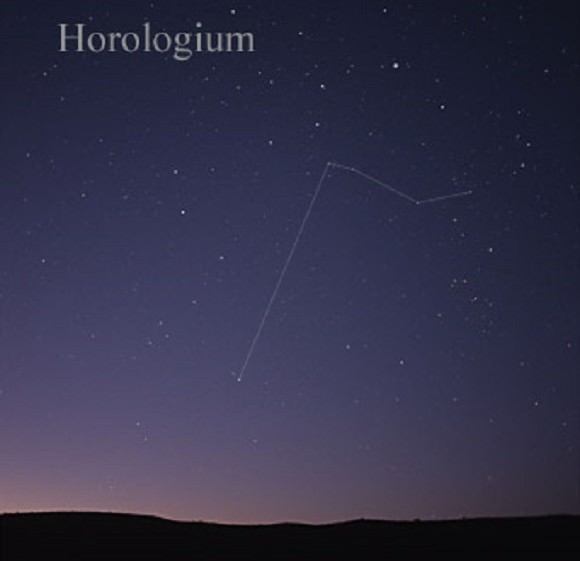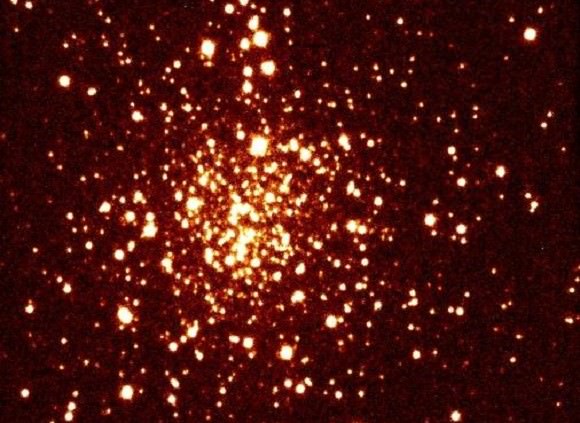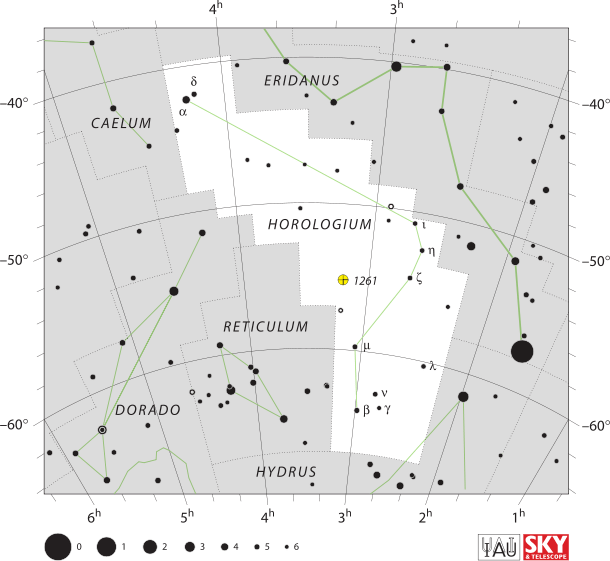If you’ve got a clear view of the skies, and happen ti live in the southern hemisphere, there’s a relatively obscure constellation you should probably check out. It’s known as Horologium, a region of the sky that is named after an important historic personality, one who is largely responsible for how we measure time.
The constellation of Horologium was one of 14 created by Nicolas Louis de Lacaille to chart southern hemisphere skies. Originally named “Horologium Oscillitorium” to honor Christiaan Huygens – the inventor of the pendulum clock – it was later shortened to its present named when adopted as one of the 88 modern constellations by the IAU.
Horologium spans 249 square degrees of sky and consists of 6 mains stars in the asterism, with 10 Bayer/Flamsteed designated stars. It is bordered by the constellations of Eridanus, Hydrus, Reticulum, Dorado and Caelum. Horologium is visible to all observers at latitudes between +30° and ?90° and is best seen at culmination during the month of December.

Horologium was named to honor Christiaan Huygens, the Dutch mathematician, astronomer and physicist. While traveling in the southern hemisphere and charting the heavens, Nicholas de Lacaille (who loved all things science) found this dim constellation reminded him of Huygen’s newly invented pendulum clock.
Huygens clock incorporated the first harmonic oscillator – increasing the accuracy to within 15 seconds per day. His “horological innovation” so impressed Lacaille that he found the pattern for this invention in the stars.
Horologium is bordered by five different constellations: Eridanus (the Po River), Caelum (the chisel), Reticulum (the reticle), Dorado (the dolphinfish/swordfish), and Hydrus (the male water snake).
![Spring driven pendulum clock, designed by Huygens, built by instrument maker Salomon Coster (1657),[96] and copy of the Horologium Oscillatorium,[97] Museum Boerhaave, Leiden](https://www.universetoday.com/wp-content/uploads/2008/11/Christiaan_Huygens_Clock_and_Horologii_Oscillatorii-580x279.jpg)
- Spring driven pendulum clock, designed by Christiaan Huygens (1657) and copy of the Horologium Oscillatorium, Museum Boerhaave, Leiden. Credit: Flickr/Rob Koopman
The official constellation boundaries are defined by a twenty-two sided polygon. Covering a total of 249 square degrees, Horologium ranks 58th in area out of the 88 modern constellations.
With almost no bright stars to claim, stargazing at Horologium can be a bit tricky. But with binoculars, a telescope, and a chart, there are plenty of opportunities for some picturesque views. Let’s start by taking a look in binoculars with Alpha Horologii – the “a” symbol on our map.
Located about 193 light years from Earth, this very normal K1 orange giant star – quietly fusing its core helium into carbon and oxygen. Nearby is Delta, the “8” symbol. It, too is rather ordinary. Delta is a spectroscopic binary star, located about 175 light years away.
So, with very little in the constellation in the way of stars, what is there to do with a telescope? First of all, there’s NGC 1261 (RA: 03:12:15.3; Dec: -55:13:01). This 8th magnitude globular cluster is very well condensed and is at home in a very picturesque field. Small wonder it made the Caldwell list at number 87. Look for a very bright core region and well resolved chains of stars at the edges of this pretty star cluster.

For larger telescopes, try NGC 1512 (RA 4:03.9 Dec -43:21). At slightly brighter than magnitude 11, this barred spiral galaxy belongs to the Dorado group and is located about 30 million light years away. While you won’t find much details here, NASA’s Galaxy Evolution Explorer show spiral galaxy NGC 1512 sitting slightly northwest of elliptical galaxy NGC 1510.
The two galaxies are currently separated by a mere 68,000 light-years, leading many astronomers to suspect that a close encounter is currently in progress. The overlapping of two tightly wound spiral arm segments makes up the light blue inner ring of NGC 1512. Meanwhile, the galaxy’s outer spiral arm is being distorted by strong gravitational interactions with NGC 1510.
Another challenge? Then try NGC 1433 (RA 3:42.0 Dec -47:13). This magnitude 10 galaxy is an example of a ringed barred spiral. While physically you may only notice a bright nucleus and the soft bar, the stars orbiting the disk of this galaxy shows its internal motions photographically. A small elliptical ring can develop near the nucleus – blue proof of star formation. Always keep a watch, because this galaxy had a supernova event in 1985.

